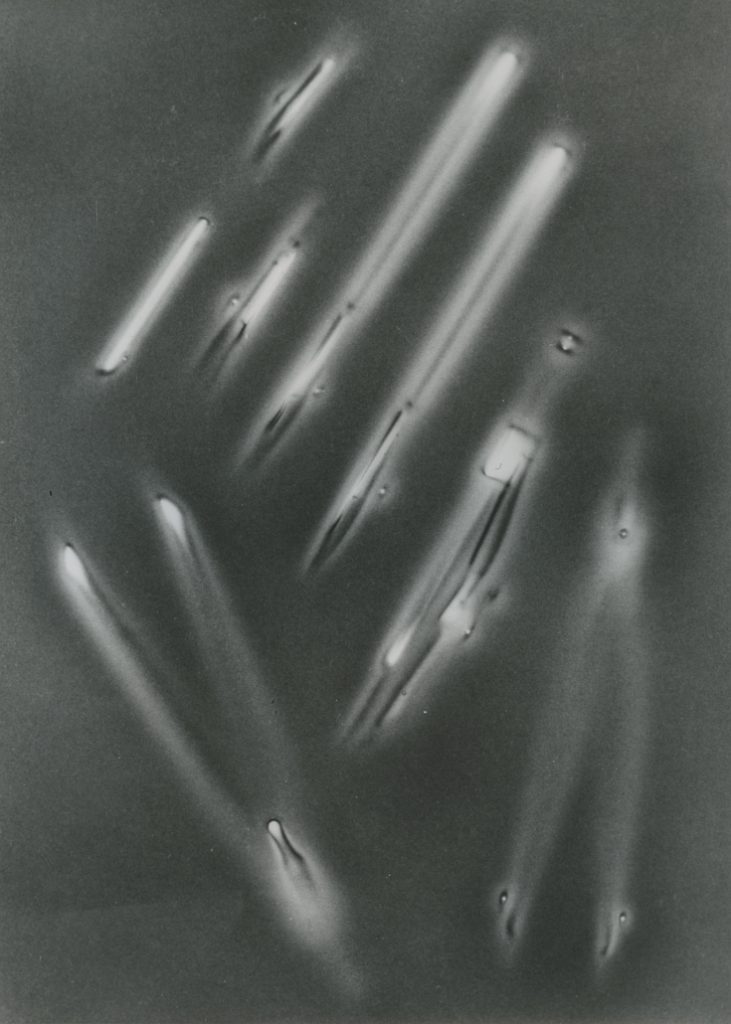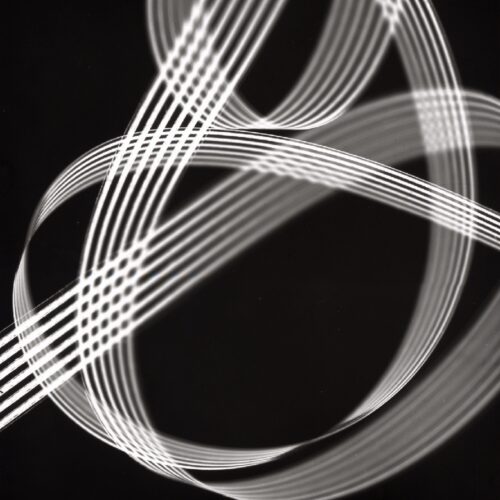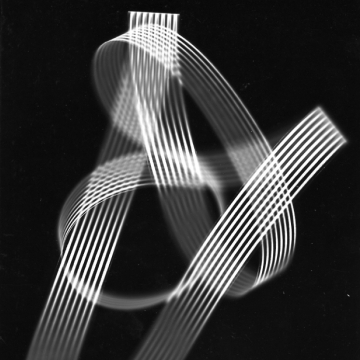















Herbert W. Franke – historic Quotes from the book “Art and Construction – Physics and mathematics as photographic experiments”
Human and Machine – how they will work together to generate art
On the occasion of the Generative Art Summit, the Foundation Herbert W. Franke publishes the English translation of “Kunst und Konstruktion” by Herbert W. Franke as a preprint. Following important quotes of the visionary.


page 5 preface* Technology often tends to be dismissed as an element hostile to art. I shall try to prove that the two domains are not opposed to one another. On the contrary: technology allows us to enter new and entirely uncharted artistic territory.
page 5 preface* The beautiful is not something absolute; it is nothing without an authority that evaluates it. In our experiment, you will be the judge who decides whether or not something is beautiful.
page 5 preface* To my astonishment, even shock, I realized that all artistic problems, not only in the visual arts, but also in literature and the new dematerialized “serialist” music, ultimately lead to this method of thinking. However, the issues that arise here are so unusual that you should regard my discussion of them as an experiment as well, one whose conclusions will need your confirmation.
page 7* When an artist picks up light-sensitive paper or film in order to mold an idea into a permanent form, with or without the use of a camera, then why should his work be any less artistic than if he had chosen paint and a canvas as his tools?
page 7* Every kind of artistic creation is bound to certain technical operations. The technical aid that we are striving for is all the more perfect the more it relieves the artist of routine activities. The ideal would be for the artist to be able to immediately translate his thoughts into real forms and then continue to meditate on his work until it is perfect.
page 7* Although it is only one possibility among many others, the most obvious use of this device defines the common understanding of photography today: a likeness of some motif found in our surroundings is projected onto the light-sensitive emulsion in order to fix a lasting trace of it. Given this fascinating possibility of realizing a centuries-old dream with the help of the camera, it should come as no surprise that other potential uses of photographic technology have been ignored.
page 8* I firmly believe that a process does not lose its ability to instill wonder when we succeed in uncovering some of the laws and connections that determine it. Not wanting to know the explanation of something even though it can easily be learned amounts to willfully deceiving oneself. After all, what is truly wonderful is precisely the fact that a systematic order governs the internal and external phenomena of our world. Exercising due caution, we will thus not shy away from trying to lift a corner of the veil that conceals the laws of aesthetics.
page 8* The unbroken progress of technology has everything to do with a remarkable characteristic of its foundation the exact sciences: everything that has once been proven correct will remain valid forever, independently of changes in time, space, customs, opinions, etc. That is why new insights build up without destroying old ones; they draw on the totality of knowledge acquired so far and incorporate it into their very substance. As a result, developments in the sciences always represent a step forward – sometimes a bigger one, at other times a smaller one, but never a step backwards.
page 8* The most obvious starting point for exploring alternative modes of vision is to experiment with light – that is, electromagnetic radiation – using wavelengths that lie outside of our visible spectrum. … Things look very different when we turn to types of shortwave radiation, from the soft to the hard, such as the so-called Grenz rays, the entire range of X-rays, the ultra-hard X-rays used in particle accelerators, and the gamma rays emitted by radioactive isotopes.
page 10* What is striking, however, is the way in which these motifs are presented: the main focus of these images is no longer a picturesque situation but a structure — the rippled surface of water, or the confusing tangle of branches that is nonetheless the result of the laws of growth.
page 12* Given the results of the previous section, we have to ask why it is that shapes and structures encountered in the fields of the natural sciences are aesthetically so striking. Inevitably, this leads to the question of what kinds of things we perceive as beautiful in the first place. … For now, suffice it to say that there are, just as in music, certain regularities by which perception, here the perception of form, is guided.
page 13* When I began my own experiments, I was not yet acquainted with Laposky’s work. However, the beautiful figures that Keetman had created with his vibrating rod were enough to inspire me to examine other physical phenomena for their ability to produce aesthetic effects. For convenience’s sake, I started out by concentrating on the phenomenon of elasticity. Have you ever twisted a rubber band of the kind used for packaging? If you do not have one at hand, look at the picture that Andreas Hübner and I took of one. Also take a look at the delicate curves that can be seen on photos of certain kinds of cellophane. If a sheet of the foil that was initially lying flat on a surface is marked by sets of parallel lines, elastic cellophane will, all by itself, assume elegantly curved shapes. The same phenomenon can be observed if one bends and twists a wire. It is largely in our hands to continue to manipulate the wire until it has the shape we have in mind, but the elegance of the overall figure will be retained during every phase of the process.
page20* Thus, we have found the answer to our question regarding the aesthetics of our abstract figures: their beauty lies in the fact that they are pictorial representations of relationships between physical quantities that are described by continuous functions.
This result gives us a clear indication of what we have to do if we want to discover additional methods for creating abstract images: we will have to look for other physical phenomena that can be translated into the optical realm.
page 21* As already mentioned, most processes in nature are describable by continuous functions. There are, however, some exceptions – that is, processes that are described by discontinuous functions. But these processes are by no means lawless; rather, they follow a higher principle of order: statistics.
page 28* The intervention of technology in the visual arts and the performing arts is unmistakable. Equally certain is that a fusion between technical and artistic processes has been initiated.
page 31* In reality, what we did was shift the site of creative productivity onto another plane. Now it is no longer an unconscious and vague volition, but a conscious and clear intention that drives the creative process. The characteristics of a work are no longer left to mood and intuition; rather, they are determined by a precise and comprehensive knowledge of the applicable laws. The creative mind has always had to follow such laws, but its search for the ultimate form has up to now consisted in a struggle to grasp the inexpressible and to rise above its own conceptual capacity.
page32* Ultimately, it is technology that opens up an unlimited range of all possible artistic forms. Technology has been created as a tool by generations of thinking human beings in their striving for knowledge. It has revealed to us the microcosm, the world of atoms and molecules, and it will lead us into the infinity of outer space. Technology can free us from the shackles of degrading work and the relentless struggle of everyone against everyone. And now technology offers to pave the way for a new aesthetics.
We should take advantage of this opportunity. The future has already begun – also for art.
*The page numbers correspond to the preprint with excerpts published for the Generative Art Summit 2024.
